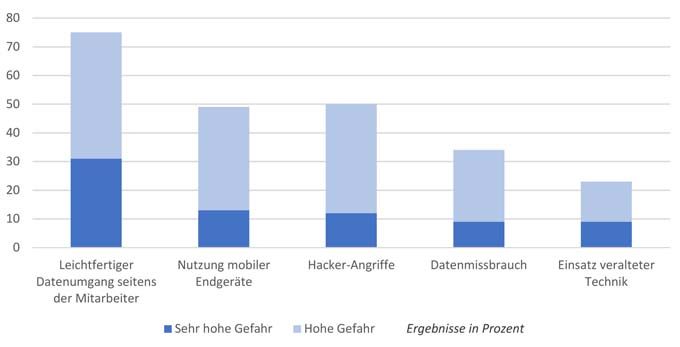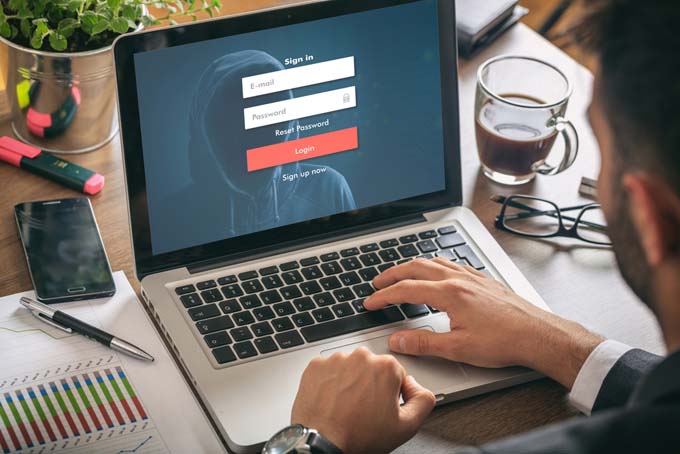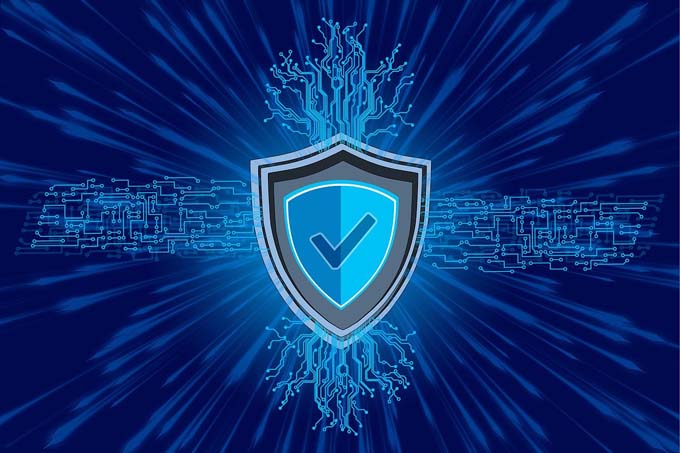What risks can you really afford to take?
The digital transformation is increasingly changing the way, when, where and with what means we work. The desire on the part of customers, suppliers and employees to have fast, simple and consistent access to data and information is just as much a driving force as innovations and new technologies. In no other area have opportunities, but also risks, threats and damage increased as much in recent years as in cyberspace.
According to a study by Allianz Insurance, fear of a cyber incident is ranked second in the risk barometer of business risks in 2019 with 48 % of all companies surveyed, just behind the risk of business interruption (ranked first) with 58 %. Various cyber incidents this year, such as those at Meier Tobler AG, Auto AG Group and the trading company Offix, show that SMEs are also increasingly becoming the focus of cyber criminals. With the increasing penetration of digitalisation, a further increase in the number of cyberattacks and rising case costs are to be expected. Experience shows that the risks that arise are classified into three main risk categories.

Technical risk factors
Imagine pushing digitization and automation to the max in your business. From the digitalization toolbox, you would bring technologies such as blockchain, cloud storage, collaboration services, interactive voice-controlled services and assistants, production robots, digital identities and sensors on board and integrate them into your company. This list is by no means exhaustive and can be extended at will.
To ensure that the technology used can develop its optimum effect, it is interconnected and supplemented and controlled by intelligent information and communication technologies. Processes are digitalized and automated across the board, not only within the company, but also through to end-to-end customer and supplier integration.
Modern enterprise software combined with RPA (Robotic Process Automation) and artificial intelligence (AI) will become the central element of your enterprise value chain. In its full digital form, everything is interconnected, the hardware/software and network technology used is no longer just within your company perimeter and interacts with each other.
Legal risk factors
Increasing networking has a very large impact on your data and its protection. You are not only responsible for your own data protection, but increasingly for the protection of your customers' and suppliers' data.
Rules, standards such as ISO 27001/2, NIST etc., guidelines, requirements, regulations and the law, such as the General Data Protection Regulation (DSGVO) or the Federal Data Protection Act (DSG, SR 235.1), form the basis for the need for protection. The fact that you as a company have to provide proof of who had access to which data and when, as well as the safeguarding of the data lifecycle, are sometimes driving forces behind the spread of Identity Governance Administration (IGA) and also cyber security and cyber defence solutions on the market.

Human risk factors
The human being as the central link is the biggest risk factor in your company!
The increase in efficiency achieved through digitalization will have a strong influence on the tasks, responsibilities and competencies of your employees and will not leave your company organization unscathed. Job profiles will change as routine tasks in your company are increasingly digitized, automated and taken over by the system. This in turn will mean that your employees will have to take on more and more complex and demanding work and that not everyone will be able to keep up with this change.
The biggest cyber security vulnerabilities according to Deloitte's Cyber Security Report
According to Deloitte's "Cyber Security Report", careless handling of data due to negligence, error or malice on the part of employees and the use of mobile devices are the greatest cyber risks and security gaps within a company.
The insight from Dan Ariely's book "Thinking Helps, but Doesn't Help: Why We Always Make Unreasonable Decisions" shows us that we humans make irrational decisions much more often than is generally assumed. This, coupled with the increasing highly interconnected system complexity brought about by digitalization, is becoming a toxic cocktail of cyber risks that we should pay attention to!
Our task is to take measures to protect our corporate assets. Assets worth protecting (infrastructure, data, licenses, concepts, patents, customers, employees, suppliers, etc.) can no longer be viewed as isolated individual assets, but are increasingly merging into a large, very complex and no longer separable overall system that requires holistic protection.
Prevention is better than cure! Only through active cyber risk management can you effectively protect your business!
Investing in effective cyber defenses will therefore have to go hand in hand with your company's increasing level of digitalization maturity. Otherwise, you run the risk of cybercriminals exploiting targeted gaps in your overall system, leaving you vulnerable to attack and blackmail.
More and more often, people who have access to sensitive data are spied on, penetrated and even blackmailed by social engineering. The data and information gained from this often serve as the first step to a cyber attack, in which the attackers specifically try to penetrate and advance successively into your overall system via your processes and the technologies used. It often takes months for attackers to get to the core of their interests, and even more often, such attacks go undetected for a very long time or are not detected at all. A systematic, proactive and effective cyber defense is therefore of central importance.
Before you can act, however, you need to know which assets require which protection, which risks you have taken and which you want to take deliberately, or where you might want to take out insurance. Risks need to be identified, classified and the appropriate measures taken. For the initial start, we offer you a free quick check for your company.
Your Quick-Win!
Only continuous risk management, ongoing monitoring and optimization of processes and technologies will provide you, your employees, suppliers and customers with the necessary security and trust for the exchange of digital data and information.
WiB Solutions AG's Data Protection & Information Security Quick Check provides your company with an initial risk assessment based on a series of questions. This questionnaire enables your company to determine the current situation and shows you whether you are implementing the most important technical, organizational and employee-related measures for a minimum level of cyber security protection. The process only takes a few minutes.
Your answers will be individually evaluated by our cyber security experts and you will receive a free initial assessment of your cyber security status as a result. It should be noted that this initial assessment is based exclusively on your self-disclosure and cannot replace expert advice on cyber security.

Disclaimer: WiB Solutions AG is an advertising customer of MQ.









